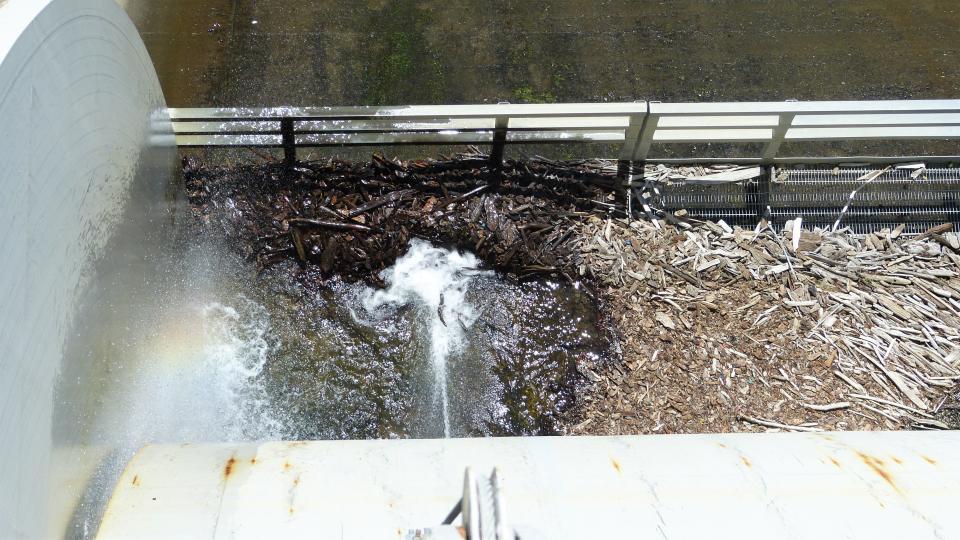Lake Shasta water level healthy as new water year begins. Trinity Lake? Still recovering.
Thanks to a stormy winter and spring, Lake Shasta’s water level is almost a third higher than it usually is in mid-October.
The state’s largest reservoir at Shasta Dam, nine miles north of Redding, was 71% full on Monday, according to the California Department of Water Resources. That’s 130% of what the lake usually holds on that date, according to the state.
The Shasta Lake reservoir is also in good shape for water storage and recreation at the start of the new water year, which began on Oct. 1, according to Bureau of Reclamation Area Manager Donald Bader.
Over the past 2022-2023 water year, "we met 100% of allocations" for agriculture, drinking water to communities/municipal use, Bader said, adding that "the lake is still full."
Last summer, Shasta Lake was also able to cover water demands it usually shares with Trinity Lake. That allowed Trinity Lake reservoir to keep water it stored in spring, and additional water it gained from mountain snow melt in summer, he said.
Note to readers: If you appreciate the work we do here at the Redding Record Searchlight, please consider subscribing yourself or giving the gift of a subscription to someone you know.
Now, Shasta Lake is "at the highest storage levels (around 70%) allowed going into December flood operations. We have to have enough space in the reservoir for the winter storms," he said.
Shasta and Trinity reservoirs recover
After three years of drought, the 2022-2023 water year was the Redding area’s wettest since 2018-2019, said meteorologist Sara Purdue at the National Weather Service’s Sacramento branch.
Redding received 41 inches of rain and snow this water year, which extends from Oct. 1, 2022 to Sept. 30, 2023. That’s about seven inches more than the average water year since 1991, Purdue said.

Most of that rain and snow arrived in the form of winter and spring storms lasting from late December to early April. By May, those storms had filled Lake Shasta to 98% of its capacity, which is about 116% of its historic average, according to the California Department of Water Resources.
The lake lapped less than four feet from its top at the dam, Bader said in May.
Lake Shasta isn’t the only North State reservoir holding more water than its historic average.
On Oct. 16, Lake Oroville was 70% full, and at 134% of its historic average for that date, according to the California Department of Water Resources.
On the same date, Folsom Lake was 62% full ― 133% of its historic average, according to the state.
Good water year helped curbed fire risk for Redding area
Rain and heavy snow pack helped make 2023 a calmer-than-usual fire year so far, with few days of high fire risk, Purdue said.
Although Redding hasn't gotten much rain since the spring, the weather wasn’t as "critically dry" as it has been over the past three years, further reducing fire risk, she said.
That’s despite a slightly hotter than usual late summer, Purdue said. While daily high temperatures in June were normal — averaging 91.2 degrees — temperatures in July and August were warmer than average.
July’s daily high temperature average was 102.5 degrees this year, compared to the 30-year average: 99.9 degrees.
August’s average high temperatures were 99.6 degrees; slightly higher than the 30-year average of 98.1 degrees.
Redding enjoyed a cooler-than-average September. Highs averaged 88.1 degrees above the 92.3-degree average.
Trinity Lake levels improve over summer
Not all North State lakes are recovering from the three-year drought as quickly.

At 51% full on Oct. 16, Trinity Lake continues to be dryer than usual, as it has been for several years, sitting at 86% of its historic average.
That's still a big improvement, Bader said.
Most of the storms that rolled over the North State in winter and spring passed by the Trinity Lake area, which is located 40 miles northwest of Redding, the weather service reported in May. At that time, Trinity Lake was only 39% full, not quite half of its historic average.
The improvement is thanks to "above average" mountain snow melt flowing into the lake over the summer, Bader said.
"Another similar winter snow pack could put us in really good position for the lake levels at Trinity" for recreation and water storage next year, he said.
More: How deep are Lake Shasta and these 6 other popular North State waterways?
More: Ask the R-S: While Lake Shasta is brimming, Trinity Dam is not even half full. Why?
Until the 2022-2023 water year, Trinity Lake's last “good year” ― one in which water levels reached historic averages ― was 2018 to 2019. Between late 2019 and 2022, Trinity had its worst consecutive three-year drought on record, Bader said.
By this spring, Trinity Lake was already in better shape water level-wise, despite not receiving rain from most of the North State's winter storms. The lake took in “more water and snow melt this past year than…the previous three years combined,” Bader said.
Trinity fills more slowly than Lake Shasta, and “it’s harder to refill Trinity in one season,” Bader said.
Jessica Skropanic is a features reporter for the Record Searchlight/USA Today Network. She covers science, arts, social issues and news stories. Follow her on Twitter @RS_JSkropanic and on Facebook. Join Jessica in the Get Out! Nor Cal recreation Facebook group. To support and sustain this work, please subscribe today. Thank you.
This article originally appeared on Redding Record Searchlight: Lake Shasta water level is high, Trinity's recovering, after drought

